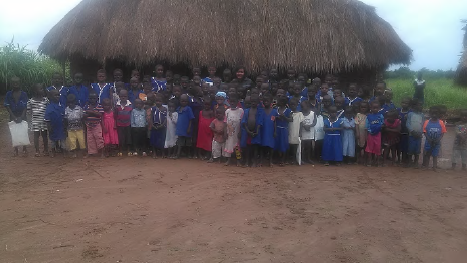|
PARTNERSHIPS FOR ENHANCED ENGAGEMENT IN RESEARCH (PEER) HEALTH
Cycle 1
Principal Investigator: Donald Grant, Kenema Government Hospital (KGH) NIH-Supported Collaborator: Robert Garry, Tulane University School of Medicine Title of NIH Award: Preclinical Development of Recombinant Antigen Diagnostics for Lassa Fever
Project Dates: October 2013 - October 2017
Project Overview:
Eastern Sierra Leone, particularly the Kenema District, has the highest incidence of Lassa Fever, a severe and often fatal viral hemorrhagic disease transmitted by the rodent Mastomys natalensis, in the world. The rodents are commonly found in homes and transmission occurs from contact with the rodents. Lassa Fever (LF) disproportionately impacts pregnant women and children. Case fatality rates for LF can reach 70% in children under age 5 and 90% in third trimester pregnancies for both the mother and the fetus. The prevalence and true impact of LF is not well understood.This study will address key gaps in knowledge of the epidemiology and natural history of Lassa fever. The goals of the study are to: 1) characterize and contrast the age and sex distribution of Lassa virus (LASV) exposure in endemic and non-endemic areas and 2) elucidate risk factors for LASV infection in pregnant women and children. The target population will consist of the entire Eastern Province of Sierra Leone and women and children in the Kenema District of Sierra Leone. The age and sex distribution of LASV exposure will be determined in a point prevalence study comparing endemic and non-endemic areas. This project will also elucidate risk factors for LASV infection in a case-control study of pregnant women and children, which will identify points in LF transmission. The proposed study will employ field epidemiology, hospital-based surveillance, and advanced laboratory techniques. These efforts will provide informed approaches for treating and controlling LF that can guide evidence-based investments for public health programming and policy.
 |  | | Traveling to remote communities. | Engaging the community school children. (photo courtesy of PI Donald Grant) |
Final Summary of Project Activities
This project addressed transmission and treatment of LF. The focus was on children and pregnant women who are more severely impacted by LF than any other group. Through determination of the age and sex distribution of LASV exposure, the team expected to identify major risk factors for LASV infection and subsequently points for interventions to effectively prevent LASV infection.
The team carried out a point prevalence study on a group of 50 communities that differ according to exposure to LASV. These communities consisted of 20 endemic villages in the Kenema District, 15 emerging villages in the Tonkolili District, and 15 non-endemic villages in the Port Loko District. Over 11,000 samples from 20+ households per village distributed among 5 age groups were collected. Dried blood spots were used to perform Lassa-specific IgG by ELISA for the detection of past LASV exposure. This effort was ongoing as of the end of the project with an interim analysis.
Multiple variables (qualitative and quantitative) were collected in the questionnaire administered to cases and controls The team also collected GPS data and data on the level of rodent infestation in case and control households. An interim analysis of Lassa seroprevalence was completed for Kenema District which saw seroprevalence ranges from 10 to 62%. The team also considered Lassa seroprevalence by age and in moderate to high prevalence villages, Lassa Fever seroprevalence increases with age. There is an increase in incidence in preteens and another increase in young adults. In these villages adults >45 years of age have the highest seroprevalence. Villages with a lower seroprevalence show a distinct pattern with lower seroprevalence in older adults. The team also looked at Lassa seroprevalence by sex in Kenema District and, with the exception of one village,, there was no significant difference between sexes.
Electronic databases with coded patient diagnostic designations and demographics, clinical, and laboratory data were generated from the project work. Manual curation of the databases is ongoing, with each entry in the electronic databases cross-checked and confirmed to be consistent with the original clinical and laboratory records. The data set generated was carefully and thoroughly integrated with the wealth of clinical data obtained on each patient throughout their stay in the KGH Lassa Ward.
Overall, Kenema District has long been considered to have the world’s highest LF incidence rate and is an established hotspot for carrying out surveillance and LF-related research. Many districts to the north and west of Kenema are believed to have limited LASV circulation, but it is unknown if this is a consequence of limited efforts for detecting the virus, inability of clinical staff to recognize the disease, or if there is truly no virus circulating in the area. This seroprevalence study suggests that LF incidence may be underestimated in certain historically non-endemic areas. This study also uncovered the age and gender distributions of LF in these areas. Further analysis of data will determine if the age and gender distributions of LASV exposure differ between endemic and non-endemic areas and the team plans to finish this analysis over the next six months. This data will inform Lassa fever vaccine clinical trials conducted by partners in the VHFC, as well as new efforts by CEPI.
Publications
Mire, C. E., Cross, R. W., Geisbert, J. B., Borisevich, V., Agans, K. N., Deer, D. J., Heinrich, M. L., Rowland, M. M., Goba, A., Momoh, M., Boisen, M. L., Grant, D. S., Fullah, M., Khan, S. H., Fenton, K. A., Robinson, J. E., Branco, L. M., Garry, R. F., & Geisbert, T. W. (2017). Human-monoclonal-antibody therapy protects nonhuman primates against advanced Lassa fever. Nature Medicine, 23(10), 1146–1149. https://doi.org/10.1038/nm.4396 Gale, T. V., Horton, T. M., Grant, D. S., & Garry, R. F. (2017). Metabolomics analyses identify platelet activating factors and heme breakdown products as Lassa fever biomarkers. PLOS Neglected Tropical Diseases, 11(9), e0005943. https://doi.org/10.1371/journal.pntd.0005943
Health Cycle 1 Recipients
|





